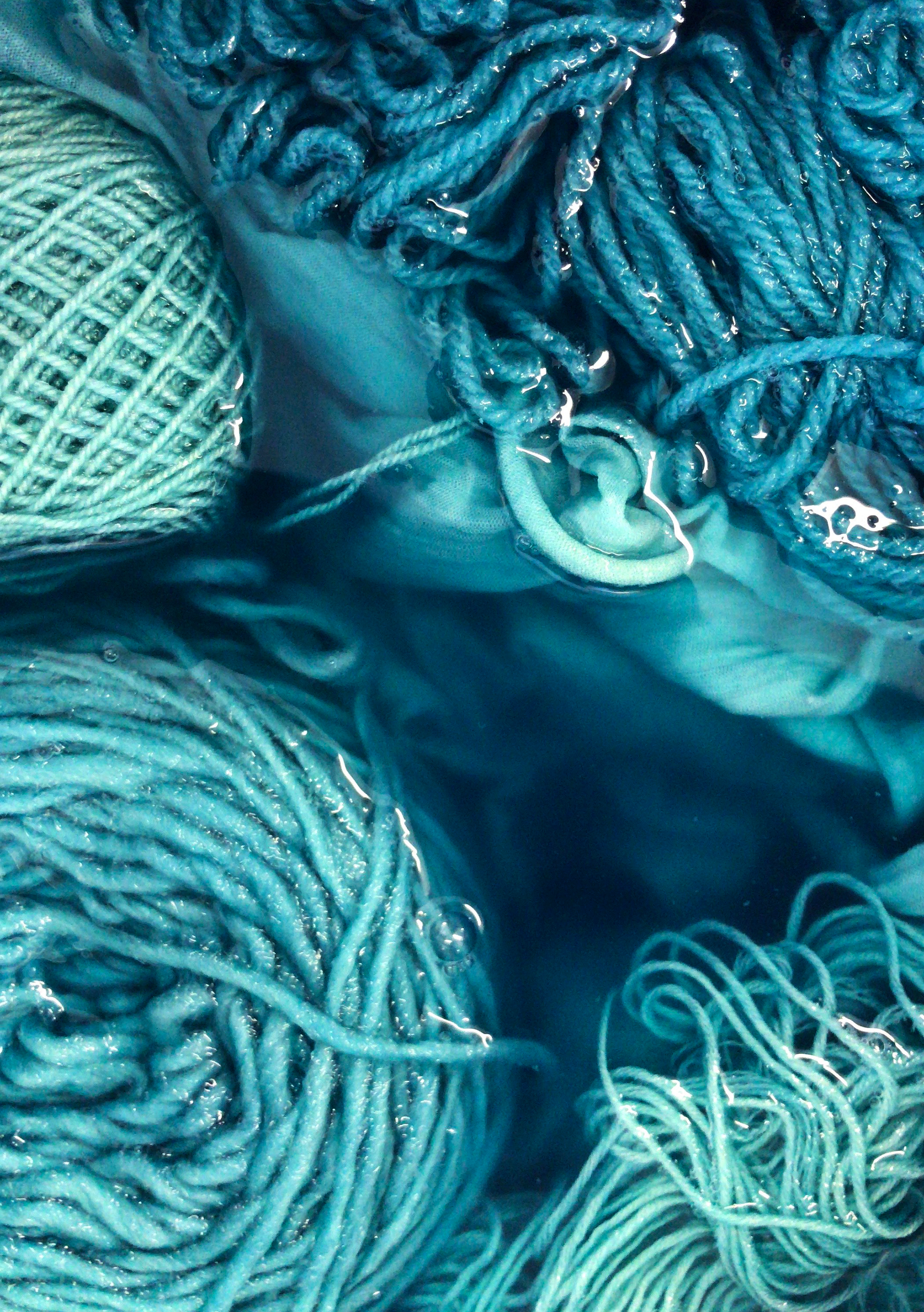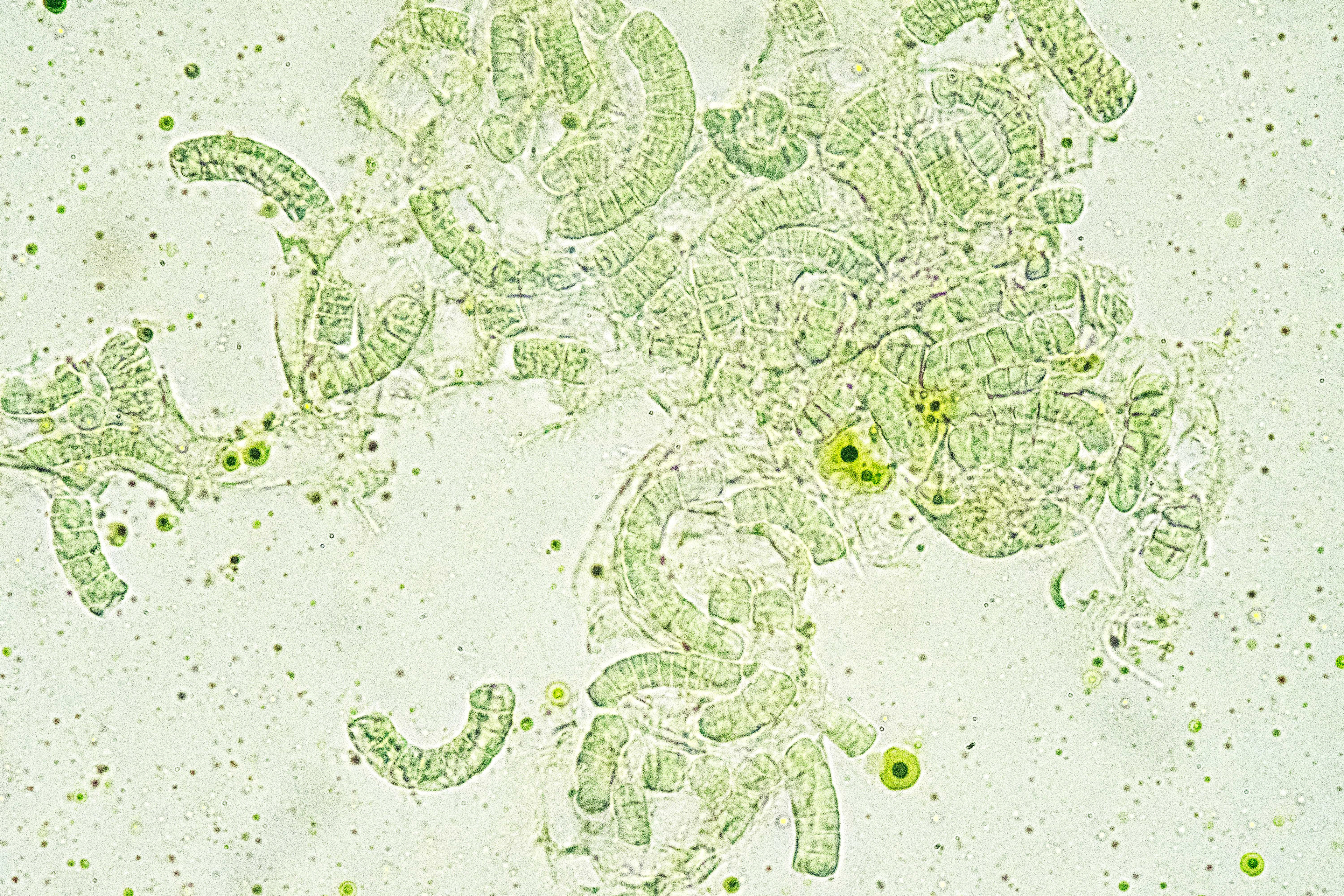
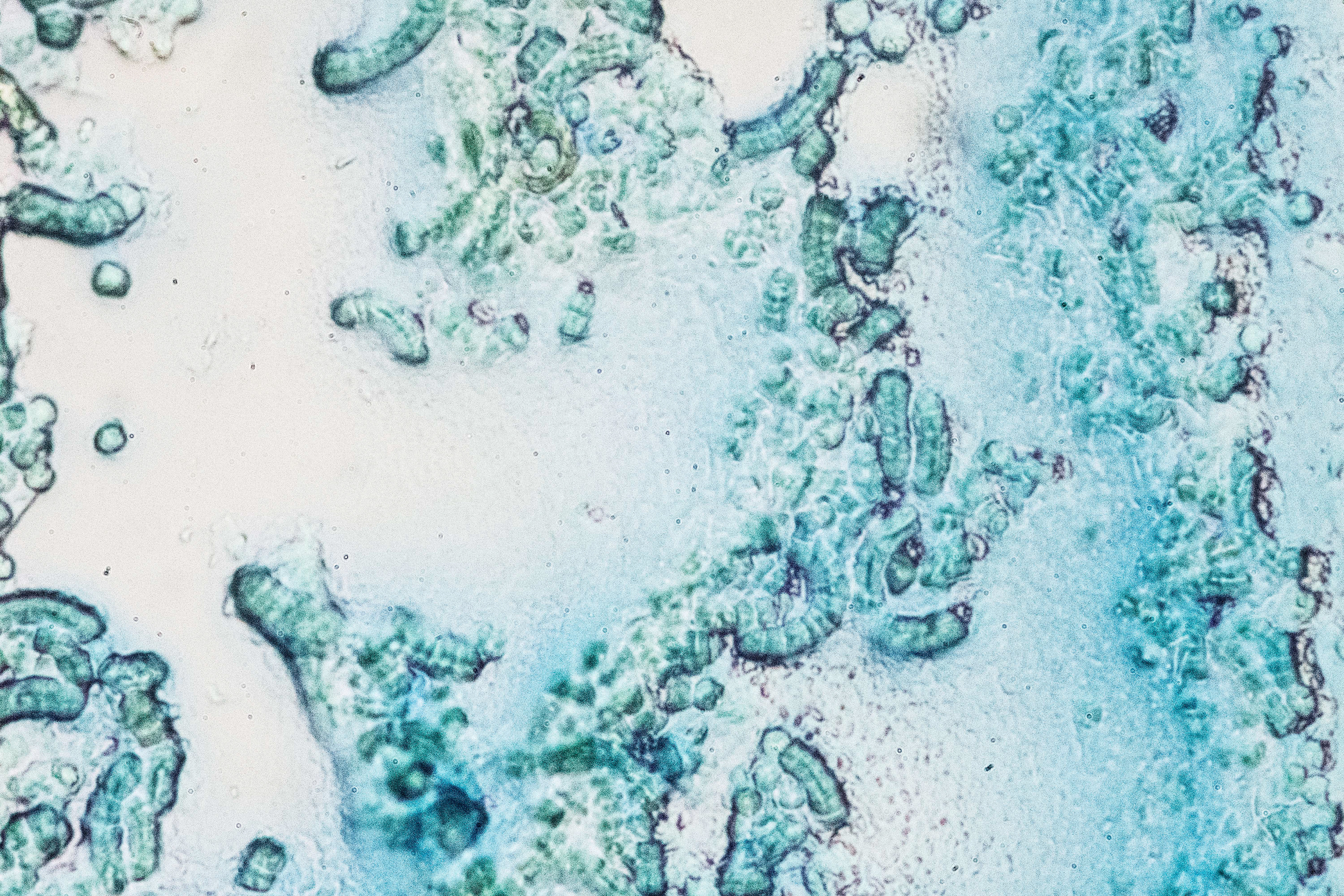
Textile colouration is currently one of the most damaging aspects of the fashion and textile industries. Using waste products as an alternative dye source with natural dye processes could reduce water pollution caused by the textile industry. Water pollution (particularly textile) and anthropogenic climate change cause microalgae to overpopulate our rivers, lakes and coastlines. This overpopulation, or better known as 'Harmful Algae Blooms', is detrimental to all aquatic ecosystems. When this occurs we have to remove some microalgae to preserve the aquatic ecosystems that we depend on.
Therefore, the objective of ‘Microalgae Colouration’ was to investigate the potential of using this waste product of anthropogenic climate change - microalgae - as an alternative dye resource for textile colouration whilst restoring our aquatic ecosystems.
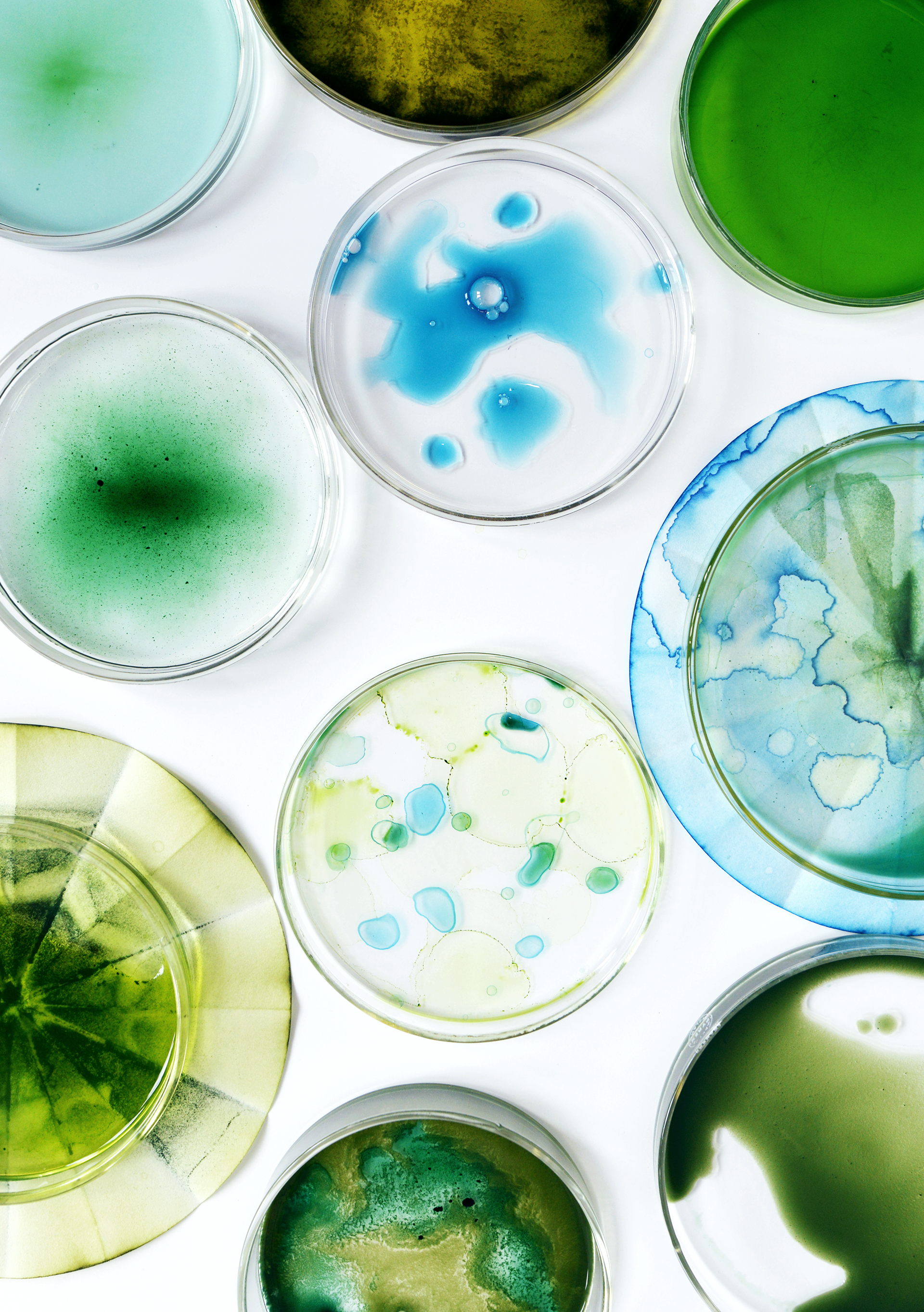
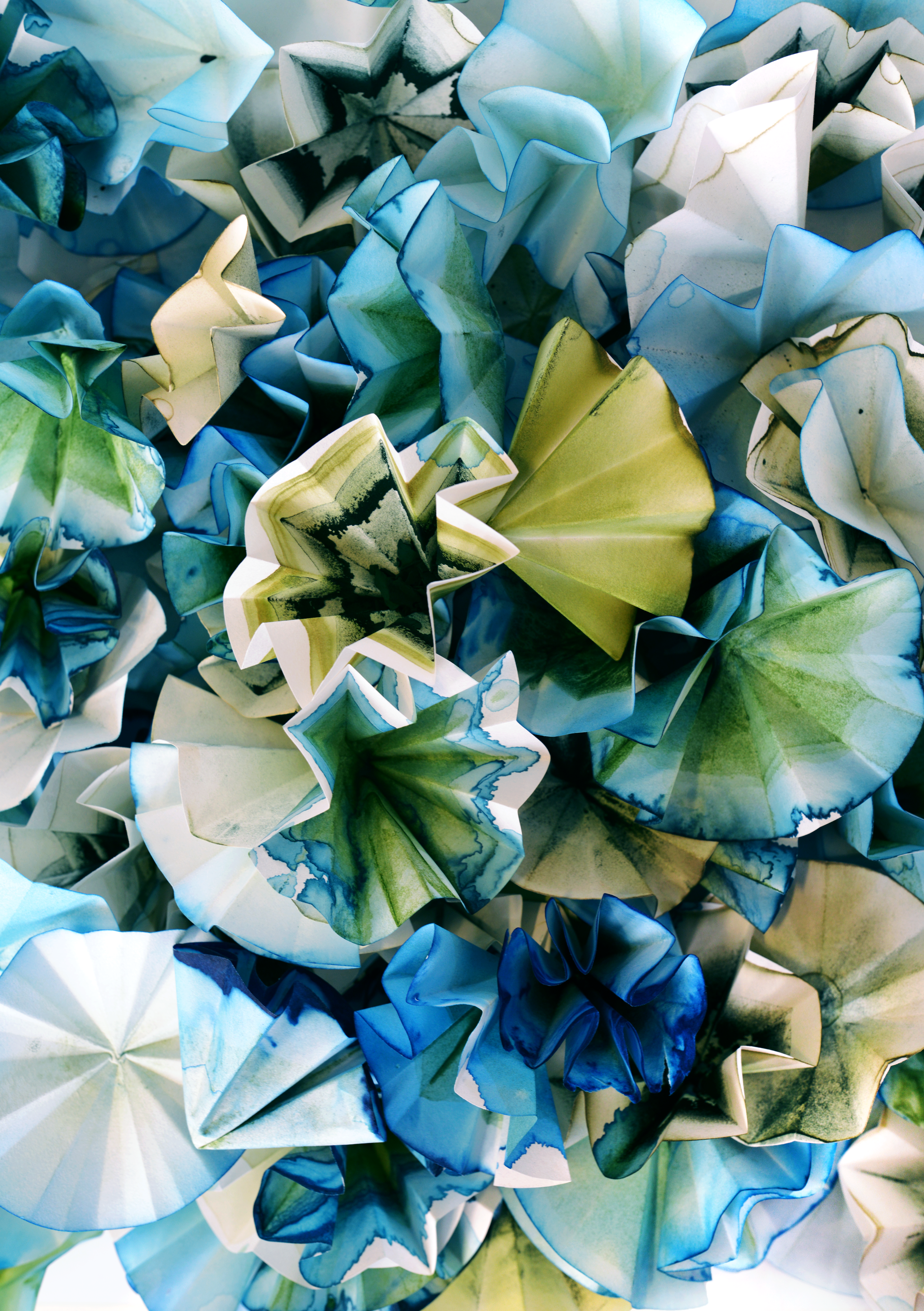
To demonstrate the range of colours produced, the dyed yarns were then used to weave and knit a collection of samples inspired by imagery of microalgae growing in Aotearoa water. All aspects of this investigation were carefully considered to ensure all the products created in the process, alongside the resulting textiles, can biodegrade with minimal harm to local ecosystems. Further investigations into pigment separation methods and stabilisers would be necessary to consider microalgae colouration as a viable, and scaled, textile dye process.

